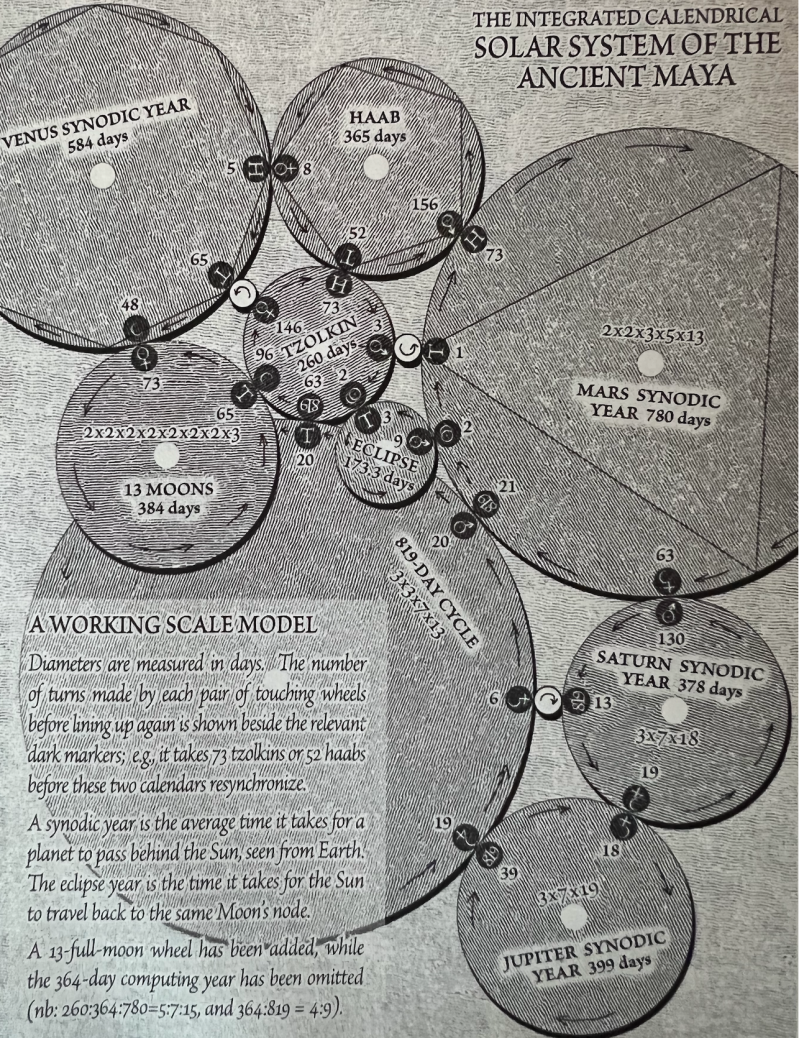Astronomical (Gear) Clocks
An astronomical (gear) clock is a clock with special mechanisms and dials to display astronomical information. It shows the relative positions of for instance the sun, moon, planets and zodiacal constellations. Here, some famous astronomical gear clocks are presented.
Famous Astronomical Gear Clocks
Antikythera Mechanism
The Antikythera Mechanism (also known as the Antikythera Device), dated to the late 2nd century/early 1st century BCE (roughly 205-60 BCE) is understood as the world's first analog computer, created to accurately calculate the position of the sun, moon, and planets. It was found in 1901 off the Greek island of Antikythera, giving it its name.
Note that a model of the Antikythera's gear train is available as a morsel!

Eise Eisinga Planetarium
Eise Eisinga’s mechanical planetarium is built into the timber roof of the living room ceiling of his historic canal house in Franker, The Netherlands. The Eise Eisinga Planetarium is the oldest still working planetarium in the world. To create the gears for the model, 10,000 handmade nails were used. In addition to the basic orrery, there are displays of the phase of the moon and other astronomical phenomena.
Note that a model of the planetarium's gear train is available as a morsel!

"Prague Orloj"
"Zytglogge"
The astronomical clock in Prague (Czech Republic), otherwise known as the Prague Orloj, shows the relative positions of the Sun, Moon, Earth, and Zodiac constellations. It also tells the time, provides the date, and, best of all, provides some theater for its viewers on the hour, every hour. In order to provide this level of functionality, the clock is split into several distinct parts. The first is the astronomical dial. This represents the position of the Sun and Moon in the sky and other various astronomical details.
Note that a model of the Prague Orloj is available as a morsel!
Switzerland’s small capital city Bern is home to the Zytglogge Astronomical Clock, a masterpiece of medieval clockmaking. The astronomical clock displays lots of information, besides just the time. A slow-moving central hand indicates the time in 24 hours. A rotating disc on the face of the clock shows the sign of the zodiac, represented by the zodiac symbols. The clock also shows the time of sunrise and sunset, the lunar phase, and the date
Note that a morsel model of Zytglogge is planned!

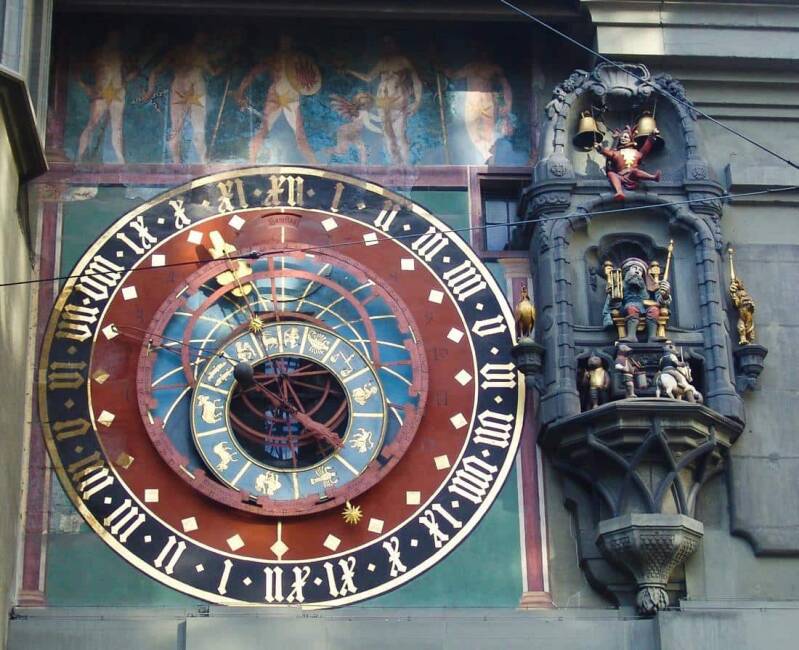
Strasbourg
"Torrazzo" of Cremona
The Strasbourg astronomical clock is located in the Cathédrale Notre-Dame of Strasbourg, France. Its main features, besides the automata, are a perpetual calendar (including a computus), an orrery (planetary dial), a display of the real position of the Sun and the Moon, and solar and lunar eclipses. The main attraction is the procession of the 18-inch high figures of Christ and the Apostles, which occurs every day at solar noon, while the life-size cock crows thrice
Note that a morsel model of the Strasbourg clock is planned!
At the fourth storey of the Torrazzo tower in Cremona (Italy) resides the largest astronomical clock in the world. The clock dial has a diameter of 8.20 metres (27 ft). The exterior represents the sky with zodiac constellations and the Sun and Moon moving through them.The clock hands are five (actually, they are four because one of them is a double), and they have the main function of representing a lot of astronomical phenomena, such as lunar phases, solstices, equinoxes and eclipses.
Note that a morsel model of Torrazzo is planned!
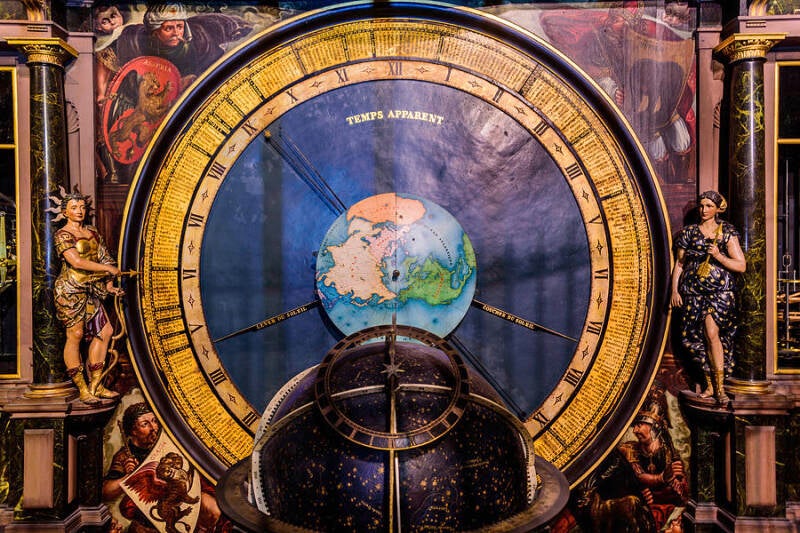

"Le Gros Horloge"
Hampton Court
The Le Gros Horloge (English: Great Clock) is a 14th century astronomical clock in Rouen, France. The clock was originally constructed without a dial, with one revolution of the hour-hand representing twenty-four hours. The Renaissance facade represents a golden sun with 24 rays on a starry blue background. The dial measures 2.5 metres (25 dm; 250 cm) in diameter. The phases of the moon are shown in the oculus of the upper part of the dial. It completes a full rotation in 29 days.
Note that a morsel model of the Le Gros Horloge clock is planned!
The Hampton Court astronomical clock is a sixteenth-century astronomical clock in Hampton Court Palace, UK.
The clock is 4.6 m (15 feet) in diameter with three separate copper dials revolving at different speeds and displays the following information: hour, month, twelve signs of the zodiac, number of days since the beginning of the year, and the phases of the moon.
Note that a morsel model of the Hampton Court clock is planned!
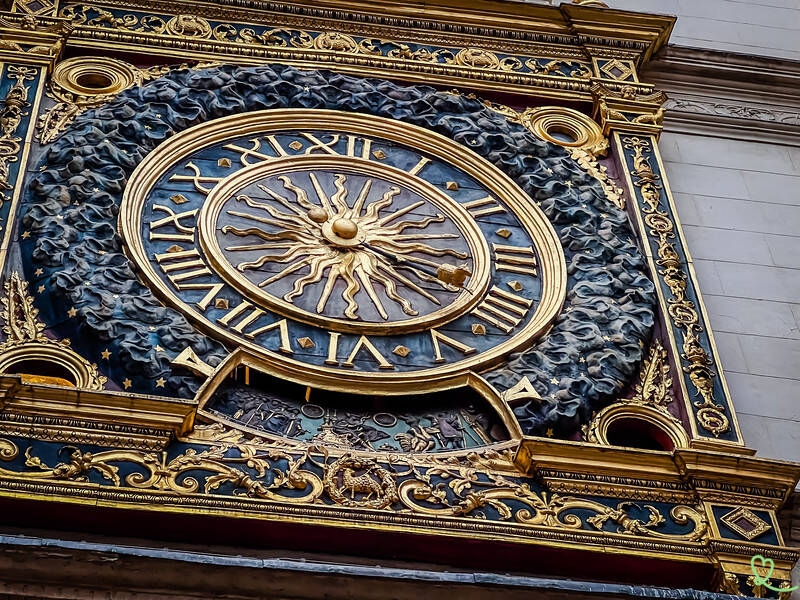

Less Famous Astronomical Gear Clocks
"Eclipses Abacus"
Besançon
Eclipses Abacus can be used to predict the date of solar and lunar eclipses in a relative accurate way. A three-dimensional (3D) model of this mechanical device is created by using Solid Works application and the simulation of its operation is accomplished by which the accuracy of its predictions can be demonstrated and inspected.
Note that a model of mechanism is available as a morsel!
The astronomical clock of Besançon Cathedral (France) is one of the most complicated horological devices in the world. Installed in 1860, the clock features 30,000 pieces, 70 dials, 122 indicators, the local time in 17 places around the world, the time and height of the tides in eight French ports, a perpetual calendar with leap year cycles, times of sunrise and sunset, an orrery, and 21 automata.
Note that a morsel model of the Besançon clock is planned!

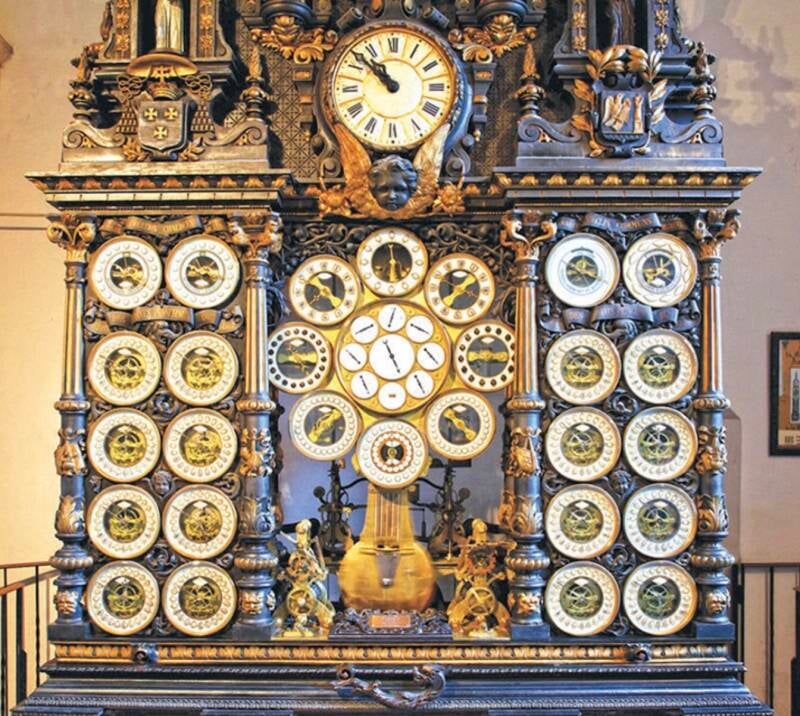
Solar System Ancient Maya
The Maya were aware of the planets in the solar system—Venus, Mars, Saturn, and Jupiter—and tracked their movements. The most important planet by far to the Maya was Venus , which they associated with war. The Maya painstakingly recorded the movements of Venus and determined that its year, relative to Earth, not the sun, was 584 days long, closely approximating the 583.92 days that modern science has determined.
Note that a model of the this solar system is available as a morsel!
